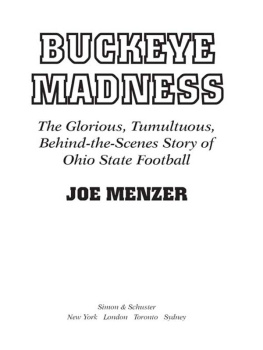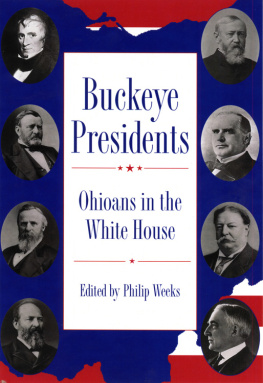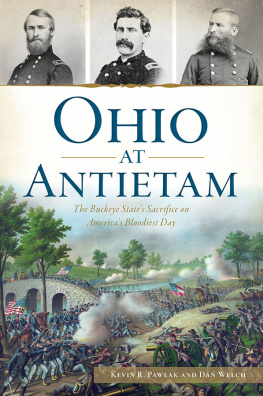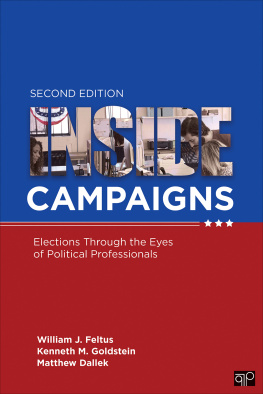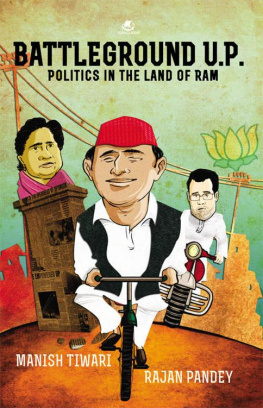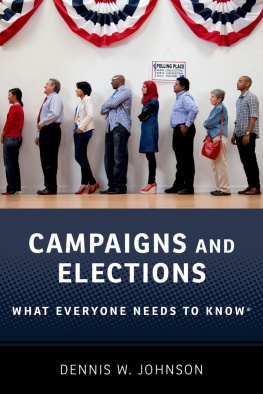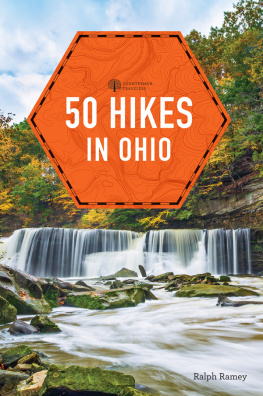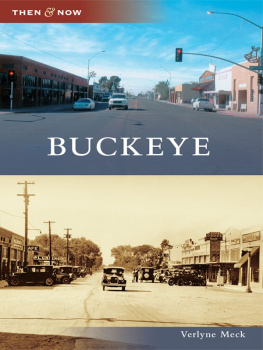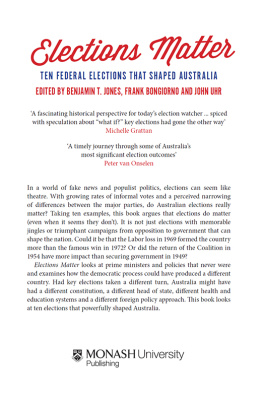B UCKEY E B ATTLEGROUN D
Series on Ohio Politics
John Green, Editor
Daniel J. Coffey, John C. Green, David B. Cohen, and Stephen C. Brooks, Buckeye Battleground: Ohio, Campaigns, and Elections in the Twenty-First Century
Lee Leonard, A Columnists View of Capitol Square: Ohio Politics and Government, 19692005
Abe Zaidan, with John C. Green, Portraits of Power: Ohio and National Politics, 19642004
B UCKEY E B ATTLEGROUN D
Ohio, Campaigns, and Elections
in the Twenty-First Century
DANIEL J. COFFEY,
JOHN C. GREEN,
DAVID B. COHEN, AND
STEPHEN C. BROOKS
The University of Akron Press
Akron, Ohio
Copyright 2011 by Daniel J. Coffey, John C. Green, David B. Cohen, and Stephen C. Brooks
All rights reserved First Edition 2011 Manufactured in the United States of America
All inquiries and permission requests should be addressed to the Publisher, The University of Akron Press, Akron, Ohio 44325-1703.
15 14 13 12 11 5 4 3 2 1
Library of Congress Cataloging-in-Publication Data
Buckeye battleground : Ohio, campaigns, and elections in the twenty first century / Daniel J. Coffey [et al.].
p. cm. (Ohio politics)
Includes bibliographical references.
ISBN 978-1-931968-76-8
1. ElectionsOhio. 2. Political campaignsOhio. 3. VotingOhio. 4. OhioPolitics and government1951 I. Coffey, Daniel J., 1975
JK5590.B83 2011
324.9771'0931dc22
2011
The paper used in this publication meets the minimum requirements of American National Standard for Information SciencesPermanence of Paper for Printed Library Materials, ansi z39.481984.
Cover design by Kathryn Shinko. Buckeye Battleground was typeset in Goudy and Trajan Pro by Bookcomp, Inc., printed on sixty-pound natural, and bound by BookMasters of Ashland, Ohio.
C ONTENTS
F IGURES
T ABLES
P REFACE
A S POLITICALl SCIENTISTS LIVING IN THE quintessential battleground state in American politics, we are frequently called on to comment on elections and politics in the Buckeye State. While there are many excellent sources for citizens and journalists on Ohio politics and history, we felt that a systematic analysis of voting patterns and public opinion was missing, especially an accessible analysis of individual, regional, and county voting patterns. In this analysis, we have strived to be as empirical as possible. At times, our focus on data analysis led us to confirm what many readers may already know about their state and what many citizens understand about the forces that drive election results in the United States generally. In other cases, however, our research led us to surprising findings that may provide readers with a better understanding of the diversity that makes the Buckeye battleground so competitive and such a good bellwether for the nation as a whole.
The research that produced this book represents an effort by the entire Bliss Institute at the University of Akron. In fact, we collected enough material to write two books. Some of this work was part of a national research project directed by the Center for the Study of Elections and Democracy at Brigham Young University; another source of research was the Akron Buckeye polls, supported by the University of Akron. In addition, many of the students in the Bliss Institutes applied politics degree program work for national, state, and local campaigns while enrolled at the University of Akron. They provided us with tremendous insight into campaigns and strategies and often were the genesis for the many ideas that were explored in our analysis.
Thus this book is the product of a collective effort. Some individuals deserve special thanks. Diana Kingsbury devoted most of 2008 and 2009 to piecing together the manuscript, tracking down data and sources, and ironing out wrinkles that had arisen over multiple accumulated drafts. Diana and Anne Hanson played an important similar role in data collection for the 2004, 2006, and 2008 elections. Our many research assistants provided enormous help, including Heidi Swindell, Zach Vierheller, Josh Peterson, Angela Ryan, Brent Lauer, Derek Feuerstein, and Will Miller. David Huskins prepared the maps that appear in the text, while Michelle Henry and Amanda Barna conducted the Akron Buckeye polls, in part through the Center for Marketing and Opinion Research. Daniel Coffey would like to thank the students enrolled in the Ohio Politics Seminar in the summers of 2008 and 2009 for their reactions and helpful feedback to early versions of the manuscript. We would like to thank Janet Lykes Bolois for reviewing and preparing the final version of the text.
Finally, we also want to thank the team at the University of Akron Press for having such unbelievable patience. We owe a debt of thanks to Tom Bacher, Amy Freels, Julie Gammon, Elton Glaser, and Carol Slatter. We also would be remiss if we did not acknowledge the support of our families, principally Mary Coffey, Lynn Green, Dawn Cohen, and Mary Brooks. Without their unwavering support and encouragement, Buckeye Battleground would not have been possible.
C HAPTER 1
Buckeye Battleground
A S MIDNIGHT APPROACHED ON N OVEMBER 7, 2004, Americans held their breath: the outcome of the presidential election hung on a handful of states, the largest of which was Ohio. If the Buckeye State went for Republican George W. Bush, he would have a majority of the Electoral College, which would assure him a second term as president. But if Ohioans chose Democrat John F. Kerry, then a new occupant of the White House would be all but certain.
In the early hours of the next morning, Americans started to breathe againsome with sighs of relief and others with gasps of indignationas it became likely that Ohio would go for Bush. The closeness of the vote delayed Kerrys concession for a few hours and spawned elaborate conspiracy theories about a stolen election. An eventual recount confirmed that Republicans had won Ohio by a very close margin, about 51 percent of the two-party vote, a figure that closely matched Bushs national popular vote percentage. This was a fitting end for the hard-fought 2004 campaign.
Four years later, Ohio was once again a crucial state, but with opposite results: Barack Obama won the state en route to his historic election as the first African American president. Unlike 2004, Ohio did not play a pivotal role in the Electoral College because Obama won more states than Bush had. However, Obama prevailed by a close margin as well, about 52 percent of the two-party vote, a figure also close to Obamas share of the popular vote nationally. By winning Ohio, Obama made it virtually impossible for Republican John McCain to prevail in the Electoral College. As it had four years earlier, the state witnessed a hard-fought campaign.
The 2008 Democratic victory in Ohio extended beyond the presidency to three congressional races, building on the Democratic wins in 2006, when the party captured a U.S. Senate and a congressional seat, plus the governorship and all but one of the other statewide offices. In some respects, the perfect storm in 2006 was about state and local concerns, but in other respects it reflected the national factors that allowed the Democratic Party to take control of both houses of Congress after twelve years of Republican rule and also ended sixteen years of Republican control of state government.
The Democratic successes of 2006 and 2008 were short-lived. In 2010, the Republicans swept to victory in Ohio, electing a U.S. senator and picking up five congressional seats as well as capturing the governorship and all the other statewide offices. These results reflect in part the broader Republican wave associated with a weak economy and other national factors. While the durability of the 2010 results is far from clear, the 2012 presidential election is likely to be as hard fought as the 2004 and 2008 campaigns in the Buckeye State.



